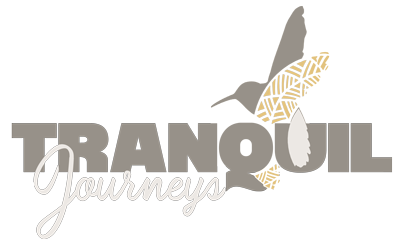Engaruka, located in Tanzania, is an archaeological site that was once home to a prosperous agricultural society. In this article, we will delve into the history of Engaruka, the technology used by its inhabitants, and the significance of its ruins.
Are you looking for a unique historical adventure in Tanzania? If so, look no further than the ruins of Engaruka, a farming town that dates back 300 to 500 years and features a complex irrigation system and terraced stone housing sites. Although the ruins are historically significant, they are often overshadowed by the stunning up-close views of the escarpment. Join us as we explore the origins of Engaruka, how to find and navigate the ruins, and what other adventures await you in the area.
Halfway to Lake Natron: The History of Engaruka
Engaruka is believed to have been inhabited from the 15th to the 18th century by the Iraqw people. The area is situated near the Great Rift Valley, which provided fertile land for agriculture. The inhabitants of Engaruka were able to thrive due to their innovative irrigation system. They created a network of channels and dams that diverted water from nearby rivers to their crops.
Archaeologists are still unsure of the origins of Engaruka, but there are a few theories. Some believe the town was built by ancestors of the Iraqw (Mbulu) people who once populated the area and now live around Lake Eyasi. Others propose it was the Sonjo, a Bantu-speaking people. What is known is that Engaruka was a prosperous town with a complex irrigation system that allowed for successful farming and a thriving community.
The irrigation system of Engaruka
The irrigation system used by the inhabitants of Engaruka was highly advanced for its time. They utilized terraces, which allowed them to farm on hillsides and retain water. They also created stone-lined channels that prevented water loss and erosion. This technology allowed them to produce large quantities of crops, which they traded with neighboring tribes.
Another notable technological achievement of the Engaruka people was their use of iron. They were skilled in ironworking and used it to create tools for agriculture, hunting, and warfare. They also used iron to make jewelry, which was highly valued in their society.
The Significance of Engaruka’s Ruins
The ruins of Engaruka provide valuable insights into the culture and technology of the Iraqw people. They also serve as a reminder of the impact that climate change can have on societies. The area surrounding Engaruka was once a lush landscape, but it is now arid and inhospitable. This change in climate is believed to have contributed to the decline of the Engaruka civilization.
In conclusion, Engaruka is a fascinating archaeological site that offers a glimpse into the ingenuity of the Iraqw people. Their irrigation system and ironworking skills were advanced for their time and allowed them to thrive in a challenging environment. The ruins of Engaruka are an important reminder of the impact that climate change can have on societies and serve as a valuable resource for understanding our shared human history.
Finding Engaruka: Navigating to the Ruins
The ruins of Engaruka are located on the eastern edge of the Ngorongoro Conservation Area and are not easily accessible. There are no signs marking the way, but travelers can find the ruins by following these directions:
- Turn west at Engaruka Chini, a smaller village along the Lake Natron road.
- Follow the rough track for 4.5km until you reach Engaruka Juu Primary Boarding School.
- The ruins are unsigned above the village of Engaruka Juu.
It’s important to note that the track can be rough and difficult to navigate without a 4WD vehicle.
Exploring the Ruins: What to Expect
The ruins of Engaruka consist of piles of rocks that resemble vaguely house-shaped structures. While the ruins may not be visually impressive, they are historically significant and provide insight into the lives of the people who once lived in the area. Visitors can expect to see terraced fields, irrigation channels, and the remains of stone houses.
It’s important to note that the ruins are not well-maintained, and visitors should exercise caution when exploring. Visitors are also advised to bring plenty of water, sunscreen, and a hat, as there is no shade in the area.
Engaruka Cultural Tourism Program: Other Adventures in the Area
In addition to exploring the ruins of Engaruka, visitors can also participate in the Engaruka Cultural Tourism Program. This program offers visits to Maasai villages, where visitors can learn about the culture and traditions of the Maasai people. The program also offers guided walks to nearby attractions, including the one-day climb of nearby Kerimasi and Ol Doinyo Lengai, two of the most active volcanoes in Tanzania.
Engaruka Ruins Campsite: Finding a Guide
Visitors looking to explore the ruins of Engaruka with a guide can find knowledgeable English-speaking guides at the Engaruka Ruins Campsite. There are no set prices for guides, and visitors are advised to negotiate the price before beginning their tour. Guides can also be arranged in advance through the Tanzania Tourist Board Tourist Information Centre in Arusha.

Tour Reviews
There are no reviews yet.
Leave a Review